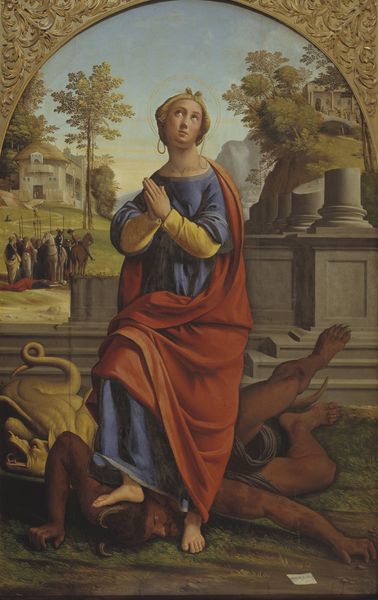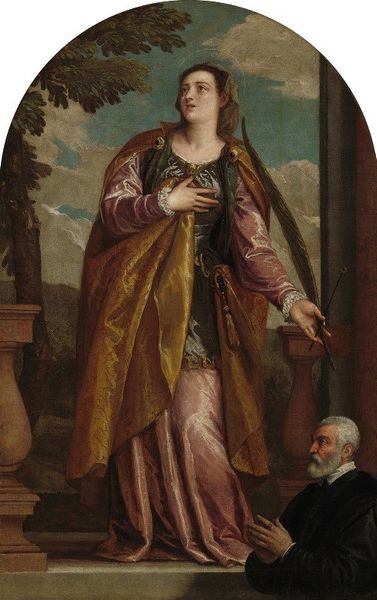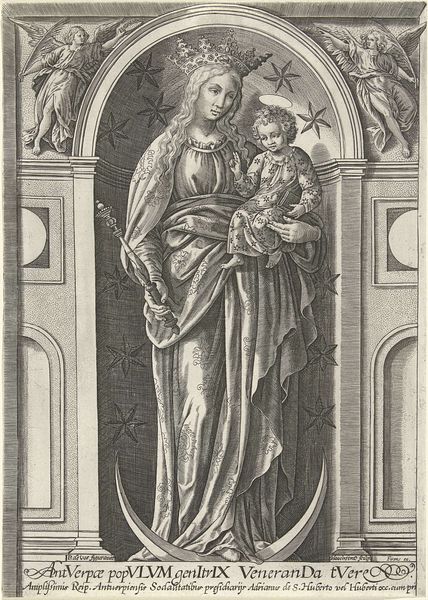
painting, oil-paint
#
portrait
#
painting
#
oil-paint
#
oil painting
#
history-painting
#
italian-renaissance
Copyright: Public domain
Curator: This is a striking depiction of Saint Lucy; attributed to Filippino Lippi. What captures your eye first? Editor: Definitely the contrast. The delicate beauty of her face against the violence represented by the dagger through her neck and the chalice of her martyrdom. There's a tension there that speaks to a wider context of women's bodies as battlegrounds, both literally and symbolically, throughout history. Curator: Indeed. The attributes are significant, locating it within the broader historical context of religious art. We see the oil painting adheres to iconographic conventions depicting St Lucy who is holding the lamp; emblems referencing the lore of her life of faith in resisting patriarchy which consequently led to her violent persecution in Syracuse. Editor: The light that she holds is so compelling. Not only a reminder of the historical context within religious iconography, it powerfully speaks to contemporary notions around sacrifice and unwavering commitment to one's beliefs; perhaps illuminating the way forward when we are experiencing metaphorical blindness to social ills. How art serves as a catalyst to prompt critical awareness for much needed social change. Curator: Certainly. The Renaissance frame around the saint adds a layer of cultural and historical complexity to our analysis of its function and reception during that period in Florence. Examining patron commissions and cultural production can help reveal insight regarding how these pieces of religious art are shaped by socio-political currents operating within Renaissance Italy. Editor: Looking at it now I wonder: what possibilities might arise from reimagining those classic narratives within modern paradigms that critique, interrogate, and subvert notions relating to entrenched power structures impacting gender equity issues surrounding representation. How would new aesthetics and strategies change our experience interacting with these works today? Curator: The discourse would be productive as the study concerning image politics could lead to re-examination about whose stories were prominently visualized versus erased from cultural canons when grappling the continued resonance images retain even when approaching present conditions concerning social constructs impacting power/knowledge distribution among diverse publics engaged visual cultural texts Editor: Exactly! Perhaps artworks like these offer not just historical perspectives but offer starting points that can propel necessary intersectional dialogues in today’s visual climate about how representation truly influences equity/inclusion goals towards systemic reform involving marginalized groups whose voices deserve amplification against silencing within contemporary spaces worldwide? Curator: These paintings indeed reveal more when placed in dialogue with theoretical perspectives; enriching contextual consideration; facilitating a potent experience prompting vital reflexive insights involving broader structural disparities necessitating persistent change when pursuing ethical practices across varied spheres affecting human lives around the world... Editor: Couldn’t agree more! Let’s work hard advocating that discussions surrounding social progress inform our perspectives!
Comments
No comments
Be the first to comment and join the conversation on the ultimate creative platform.














